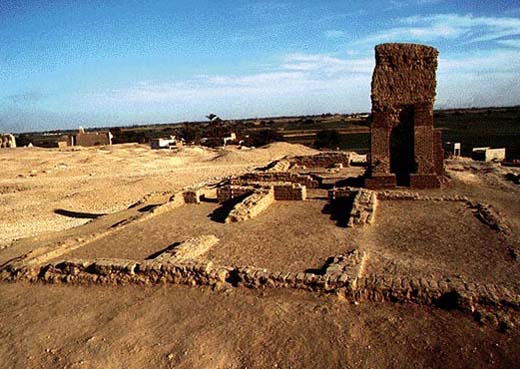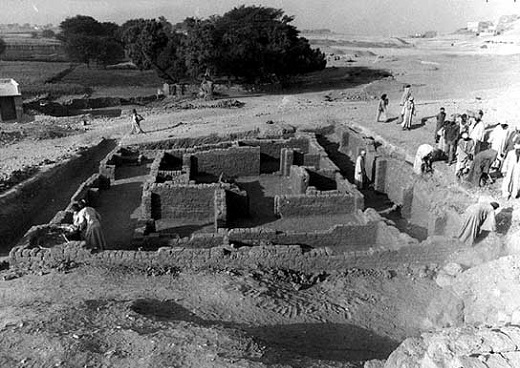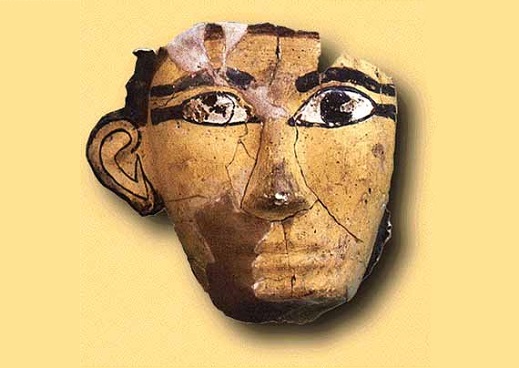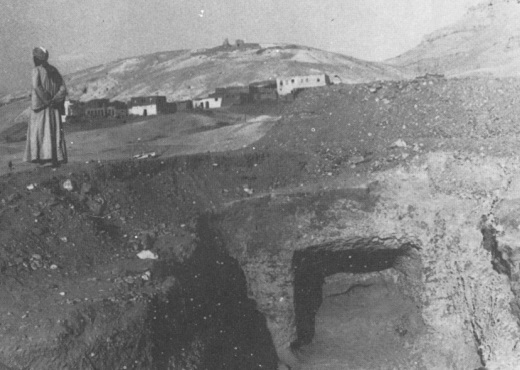Excavations and archaeological projects of the University of Pisa in the area of Thutmosis temple
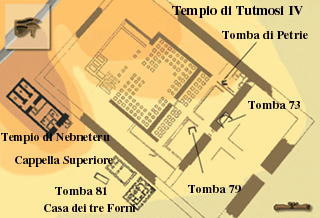
On the opposite bank of the Nile, normally called “Thebes west”, the great Libyan mountain overlook the landscape. Used as necropolis since the Middle Kingdom, it was chosen by the New Kingdom pharaohs for their eternal abodes – the secret rock tombs – accompanied by the funerary temples lining up along the edge of the fields.
There are: the Valley of the Kings, the Valley of the Queens, the tombs of the nobles, the workers’ village of Deir el Medina, the temple of Queen Hatshepsut in Deir el Bahari, the Ramesseum of Ramesses II in Gurna, the temple of Amenhotep III (of which the two Colossi of Memnon remain), the mortuary temple of Thutmose IV, the mortuary temple of Seti I and, further south, in Medinet Habu, the great temple of Ramesses III.
Between 1973 and 1981 the archaeological excavation of the University of Pisa (although in the early years the mission was Milan-Pisan) in Gurna focused on the area of the Thutmosis IV mortuary temple (1425-1405 BC) with important discoveries. These gave many new information about a Middle Kingdom necropolis, where three tombs were investigated (T 73, T 79, T 81), in addition to one (T. Petrie) that had been explored by the English archaeologist in 1896.
The mortuary temple of Thutmosis IV was built in the area of the ancient necropolis. Largely explored by F. Petrie in 1896, the temple is identifiable in its original structure, even if it is in a state of great decay. It shows two terraces connected by ramps which recall the architecture type of Hatshepsut’s temple in Deir el Bahari. As this one, it also included the use of monumental Osiris figures attached to square pillars, of which many fragments that still preserved the original colors and some relief were found. In the middle of the second terrace, on the south side, in a small cavity dug into the ground, the remains of a foundation deposit with two faience plaques with the name of the pharaoh were found.
One of the steles commemorating the victories of Thutmosis IV over “the vile country of Nubia” was found on the south wall of the terrace; those commemorating the victories over Asia on the north wall. The two service facilities (the “House of Wine” and “House of Bread”) were used for special offers for ceremonies and temple daily life.
